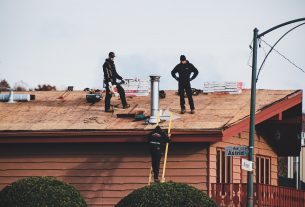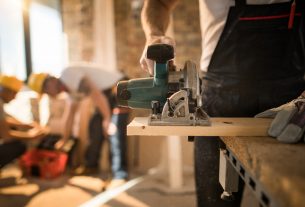No matter how well you maintain your walls, sometimes your drywall tears. And we know it can seem like a real challenge to fix them. But don’t worry! In today’s blog, we give you some tips on how to fix it. Want to learn more? Keep reading below!
What Are the Steps to Fix a Torn Drywall?
Remove any objects that have fallen on the drywall and damaged it.
If the tear is small, use a needle to sew it closed. If the tear is larger, use a seam ripper to remove the entire section of drywall.
Apply joint compound to both sides of the torn drywall and press it into place with a flat object such as a hammer or screwdriver.
Replace the nails that were used to hold the drywall in place and drive them through the joint compound and drywall to the wall studs or joists below.
Repeat steps 3 through 5 for all broken sections of drywall in the room.
Where Do You Start When Fixing Torn Plaster Paper?
If you have a tear in the drywall, it’s important to start by locating the tear. If the tear is on an exterior wall, it may be visible from the outside. If the tear is inside the wall, you’ll need to find a way to access it. Once you locate the tear, follow these steps:
Try to determine where the broken piece of drywall is on the wall. This can be done by looking at pictures or diagrams of your room before fixing anything.
Remove any screws and nails holding wallpaper or other materials above and below the piece of drywall.
Carefully peel back the dry wallpaper until reaches the underlying studs or joists (the structural members that support the walls). If necessary, remove any old paint or plaster that may be covering them with a screwdriver. Use a putty knife if necessary to loosen the adhesives that hold the drywall sections and studs/joists together. You may also need to use a wire brush if large areas of dust and dirt build up on dry wallpaper and studs/joists over time (this can often be remedied with a good cleaning job). Be careful not to damage the wires running under the drywall!
Check for holes in the frame around the damaged area; this could indicate water damage that requires professional repair work, such as replacing damaged frame members, etc. If there are no holes in the frame, continue with the next step.
Cut new pieces of drywall paper slightly larger than the original size and overlap them over the existing sheets. Smooth the edges with sandpaper so they look like one continuous sheet again (you can also use painter’s tape if you like). Fix the screws into the freshly cut pieces just enough so they don’t come out when taped together. Do not over-tighten the screws. Repeat the process until the entire section containing torn drywall has been replaced with new sheets of drywall paper and taped securely. Clean the area thoroughly before returning to paint etc.
Is It Difficult to Fix Torn Plaster Paper?
It’s not hard to fix torn drywall. The most important thing is to be careful and follow the steps outlined in this guide. If you don’t, you may end up with a worse problem that will require professional help.
To get started, first determine where the tear is. This can be done by looking at the surface of the wall where the paper was torn, or by feeling around for an obvious hole. Once you’ve located the tear, use your fingers to gently remove the wallpaper until it comes loose in one piece.
If there are staples holding the wallpaper in place, remove them with a staple remover tool or a pair of pliers. Be sure to hold down any loose pieces of wallpaper, as they can get caught in your machinery while you’re trying to fix the drywall.
Once you’ve removed all the staples, carefully smooth any rough edges on both sides of the tear by hand or a putty knife. Next, apply some joint compound to both sides of the tear and spread it evenly with a trowel or a brush. Use your fingers to smooth out any lumps or bumps as you go.
When the joint compound has completely dried (usually within 24 hours), sand with 100-grit sandpaper followed by 220-grit sandpaper until both surfaces are smooth and shiny again. Finally, paint over any repaired areas with new drywall paper and trim off any excess material with a utility knife or flush cutters.
There you go! If you carefully follow those steps, you will easily fix your torn drywall. What else do you need to repair at home? Let us know in the comments below.


